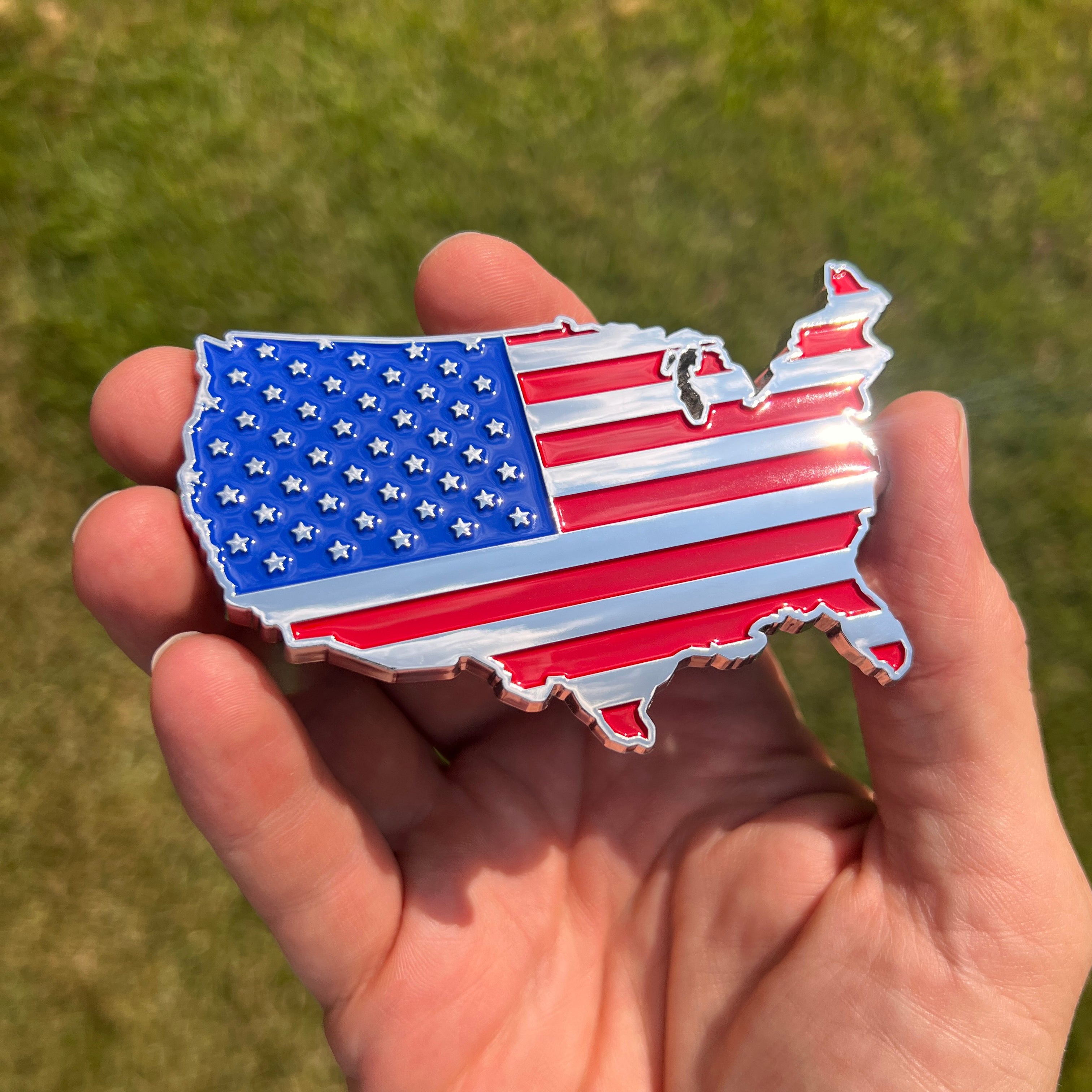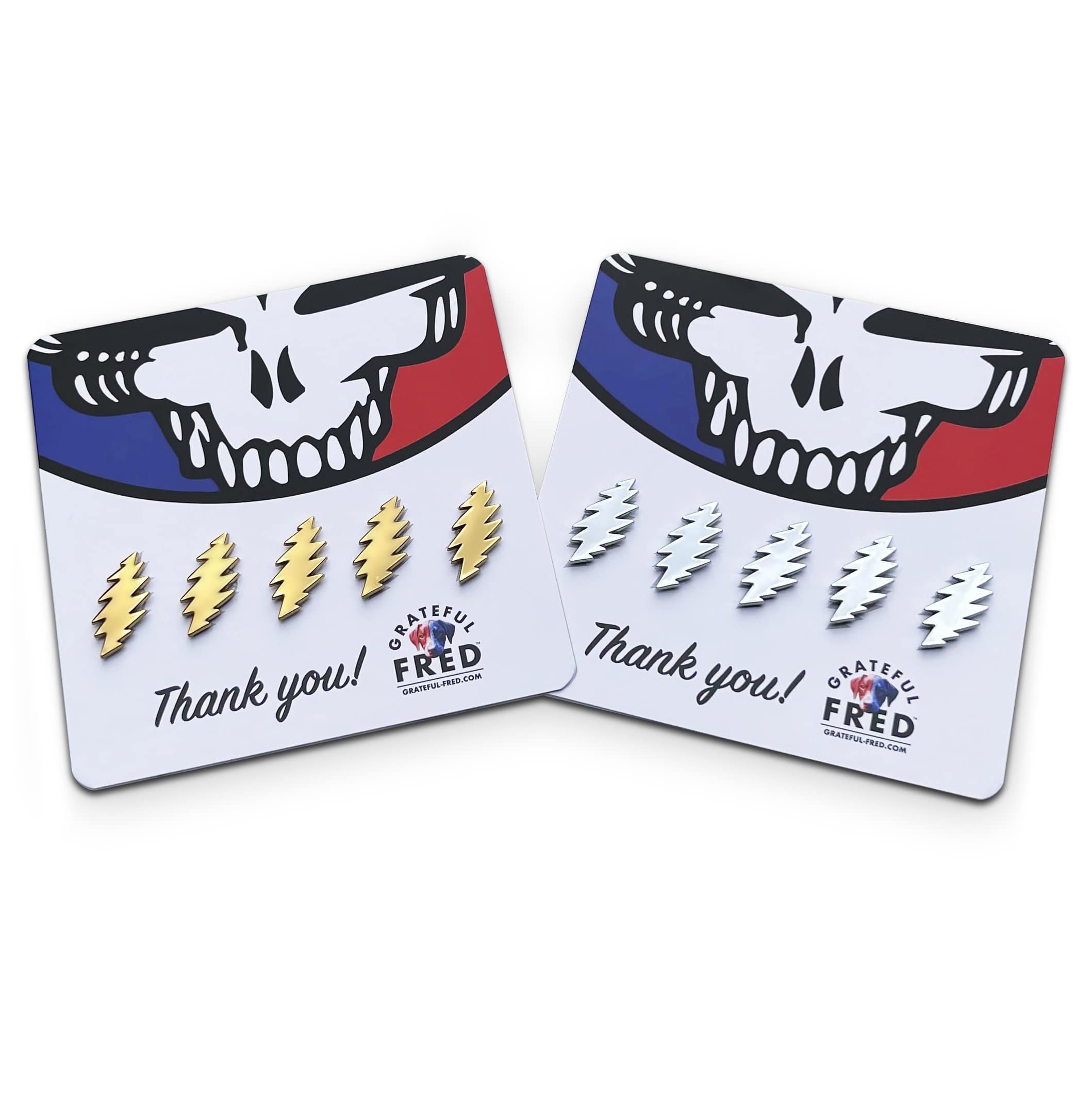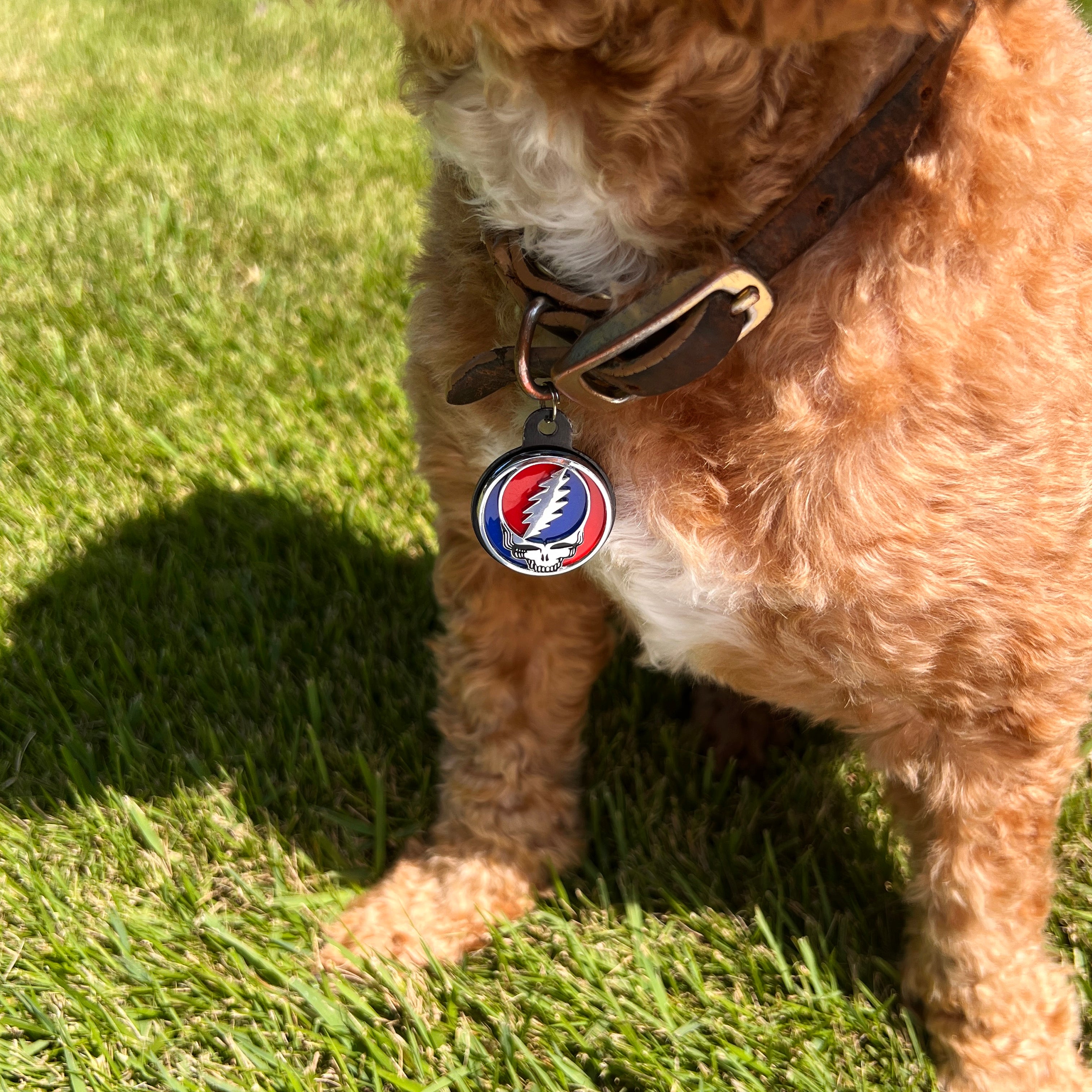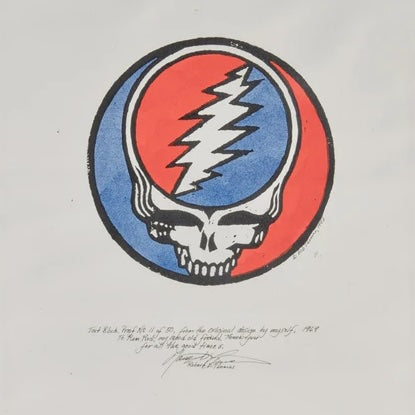For our second dive into Grateful Dead symbolism, we’ve decided to explore the Steal Your Face logo. Made up of the classic skull and 13-Point bolt, this symbol has become a calling card for Deadheads… and is ultimately a seriously bad-ass mark.
Shop the Stealies
At Grateful Fred, we’ve taken a real affinity to this logo, and have created many versions of the Stealie… MEGA, Minor, Color, Chrome, Black, and more! It’s one of our most well-loved product categories, which got us thinking…
Where did the Steal Your Face logo come from?
Most deadheads (and even some “muggles”) instantly recognize what is now known as the Steal Your Face as THE logo of the Grateful Dead. The mark has been used across many applications to show affection for the Dead, and can even frequently be seen with the center customized to show any number of intersection interests, like home state, favorite team, the appreciation of other bands, hobbies… if you can think of it, there is probably a Stealie for it.

A little known fact is that a trademarked logo like the Stealie can’t be protected when it’s been manipulated as a parody of the original (the parody law).
But how did the Stealie become a symbol synonymous with the Grateful Dead?
The Grateful Dead Logo
In the early days of the Grateful Dead (we’re talking early), the band was regularly playing bigger venues and with other acts, and sound engineer, Owsley “Bear” Stanley, realized that they needed a symbol to identify their equipment. He partnered with graphic designer Bob Thomas, and the 13-Point Bolt was born.
On his website, Owsley recollects, “A few days later I was talking to Bob and suggested that perhaps the words "Grateful dead" could be placed under the circle, using a style of lettering that would appear to be a skull if you saw it from a distance (I guess I was influenced by too many posters of the time). Anyway, a few hours later he came down from the loft with the design we know and love.”

At this time (around 1969), the skull and lightning bolt symbol was not referred to as the “Steal Your Face” or “Stealie”. It was simply referred to as the Grateful Dead logo.
How did it become the “Steal Your Face” Logo?
In 1972, about three years after the first appearance of the Grateful Dead logo, the band debuted “He’s Gone.” This song tells the story of Mickey Hart’s father, who was brought on in 1969 as the bands’ manager. Less than one year after stepping into the role, he was discovered to have been stealing money from the band, and ultimately skipped town, taking the stolen money with him and leaving the band broke.
When the song debuted, however, many fans gravitated towards the line, “Steal your face right off your head,” and applied it to having your “face stolen” by the music. This was basically a way of saying that once you “got” the Dead, you’d never be the same again.

This led to the beginning of the Grateful Dead logo being known as the Steal Your Face, or Stealie, but that name was solidified in June of 1976, when the Dead released a double live album by the name, “Steal Your Face”. The album was recorded at the Winterland Ballroom in San Francisco on October 17–20, 1974, an alleged "farewell run" that was followed by a then-indefinite hiatus. The album art features the Skull logo, and from that point on, the mark was known as the Steal Your Face logo.

|
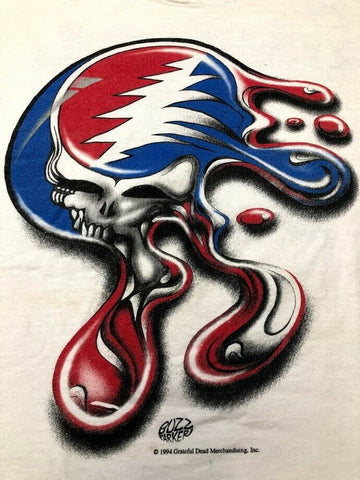 |
 |
Steal YOUR Face
With all of this history, it is easy to see how the SYF logo has become widely used and loved among Grateful Dead fans. There are so many stories and replications of the logo in the world, that give the logo an identity of its own!

